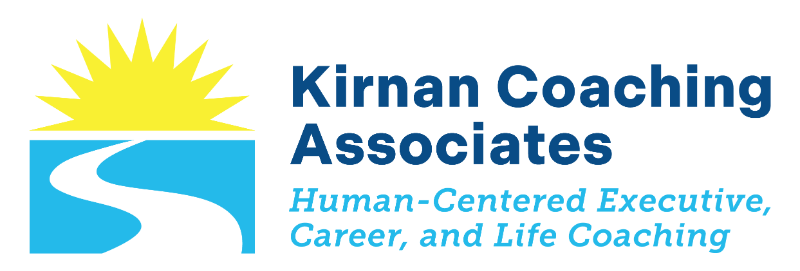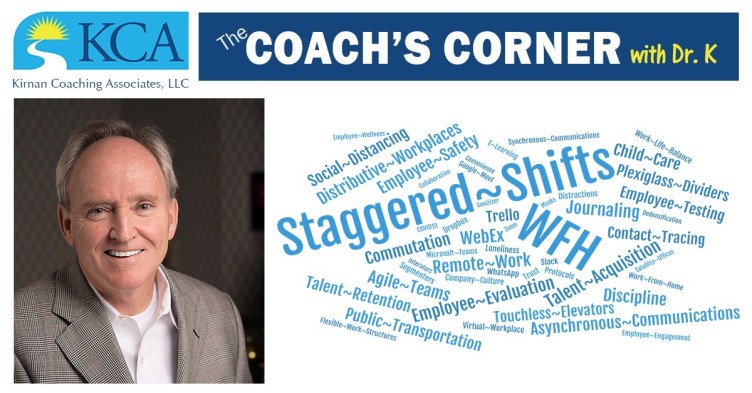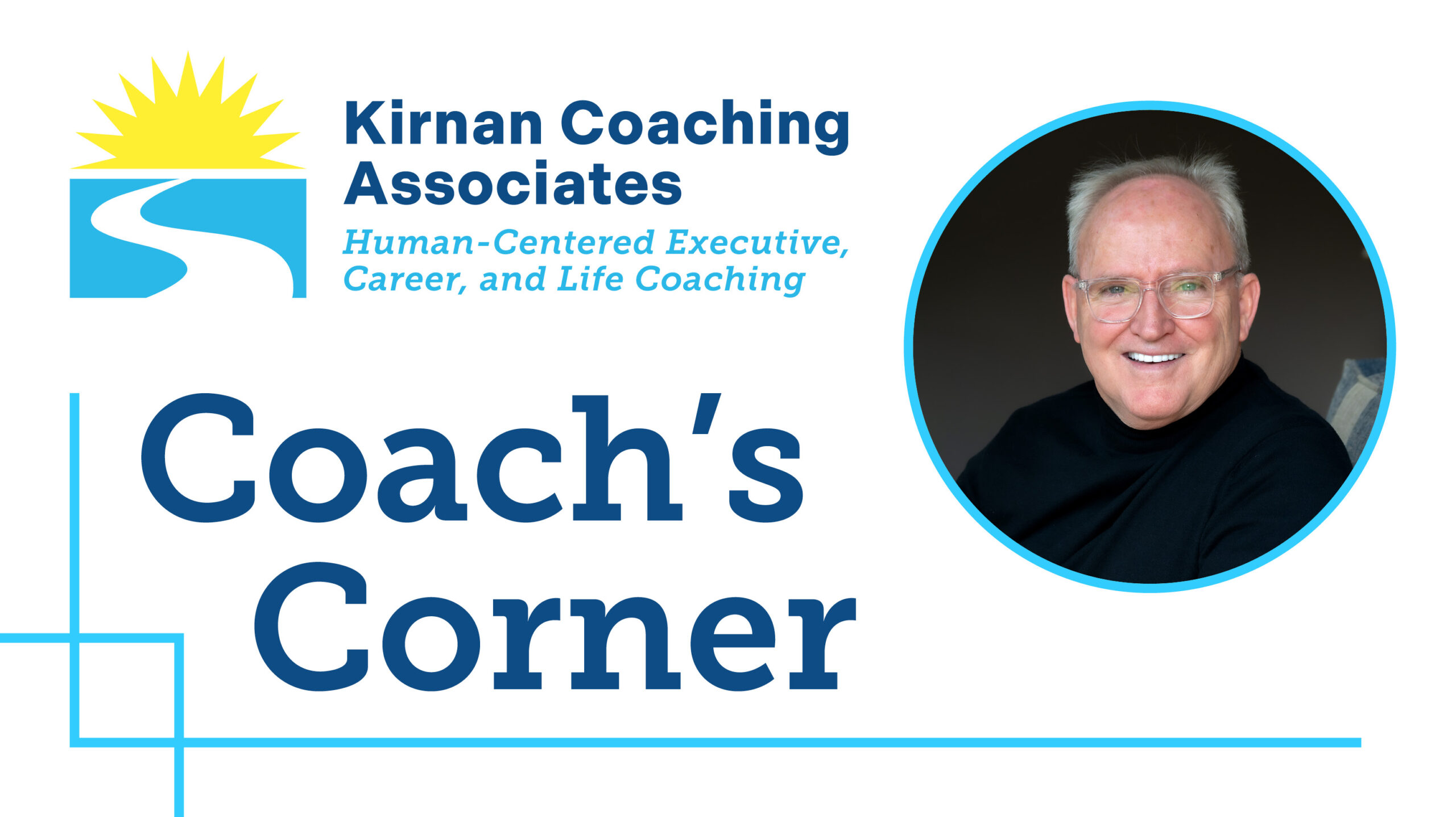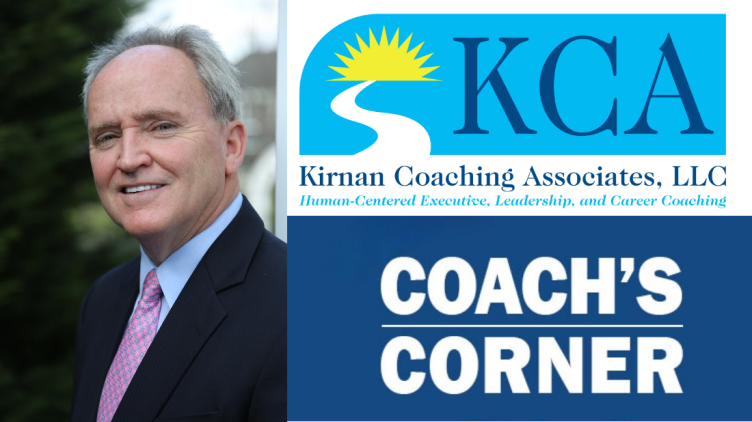“The more concerned we become over the things we can’t control, the less we will do with the things we can control”
John Wooden, Legendary UCLA Men’s Basketball Coach and winner of 10 NCAA Championships
The Coming Dedensification of the Traditional Office Environment
With shelter in place restrictions beginning to lift across the country, employers and employees alike are assessing whether the recent pivot to remote work and more flexible work arrangements during the Covid-19 pandemic will become part of a “new normal” when things settle. Most employers have been pleasantly surprised at how well Remote Work/Work From Home (WFH) arrangements have performed during the pandemic with little if any noticeable impact to productivity. As a result, many companies have already announced plans to have their employees continue to WFH through year-end with Facebook even setting a stretch target to have as many as half of its 45,000 employees working from home within 10 years.
Of course, not everyone will be able to WFH as work for some industries require physical proximity (See recent University of Chicago study https://news.uchicago.edu/story/much-us-staying-home-how-many-jobs-can-be-done-remotely), but the traditional office environment as we know it will be nothing like the pre-pandemic experience as a major dedensification trend takes hold to conform with strict protocols on social distancing. That trend will usher in a new workplace environment where offices are likely to become smaller and fewer in number with strict occupancy limits for conference rooms and other shared places. This new normal is likely to involve staggered shifts and start times; plexiglass dividers with markers on the floor; touchless elevator controls; new ventilation systems; and daily health screenings with temperature checks; Employee safety and wellness will become core values and a key crucible for C-Suite leadership teams as companies increasingly offer a virtual and flexible workplace capability, allowing work to be done anywhere and at any time. Remote work and flexibility will become an integral components of a talent acquisition and retention strategy that will enable companies to tap an ever expanding pool of talent. In sum, the Future of Work will increasingly be viewed not as that destination or place that you go to everyday to do your work but rather as a virtual workplace that offers the employee multiple options on how they can best perform their work and be judged accordingly on whether they are delivering results.
Preparing for the New Normal of Remote Work/WFH
Whether you are currently working or in transition mode, now is the perfect time to reflect more deeply on your own experience with Remote Work/WFH, evaluating its benefits as well as the distractions that you have encountered and what you perceive are some of its major disadvantages relative to working in the traditional office environment. You can then compare your own experience with what are considered to be the Best Practices of Remote Work/WFH to see if there are options that could enhance your WFH experience. It may also be helpful for you to redo the KCA Wheel of Life and KCA Wheel of Work Assessments to gauge whether different components in your life and career have changed during the pandemic from what your assessments were prior to the outbreak of the virus.
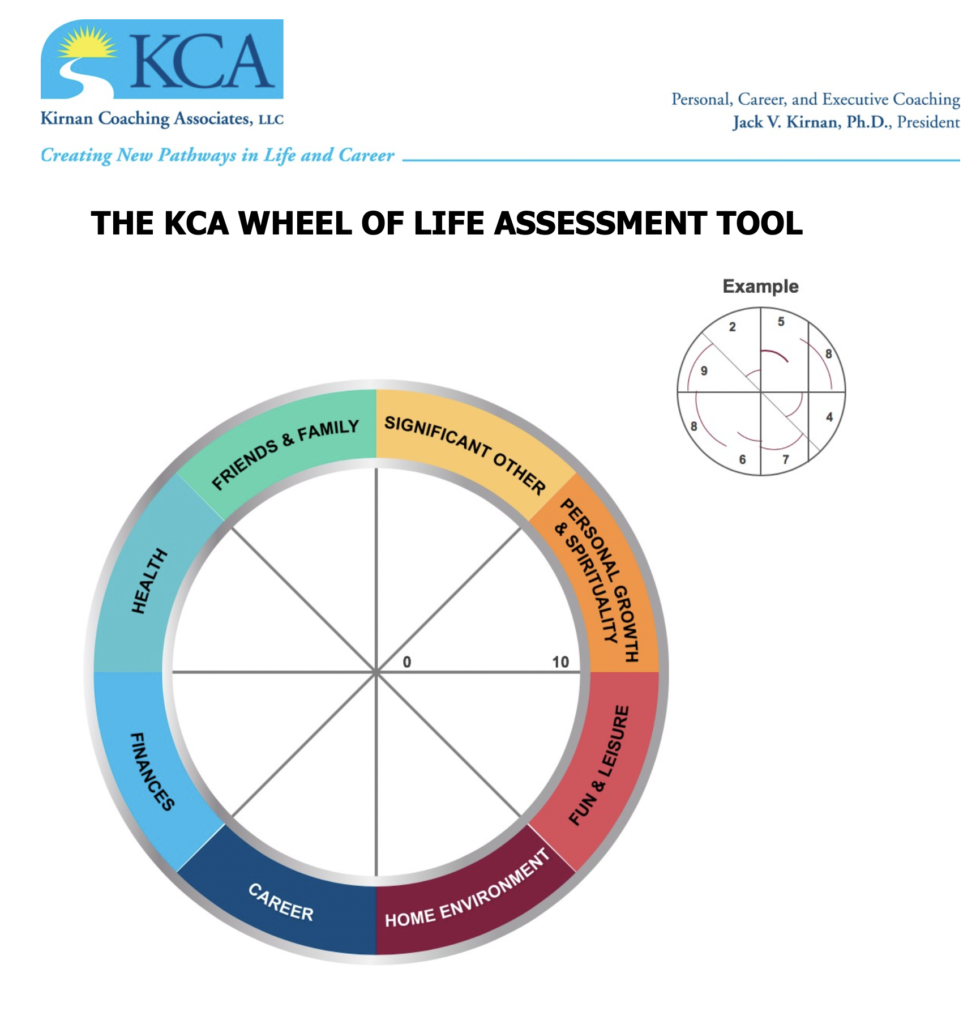
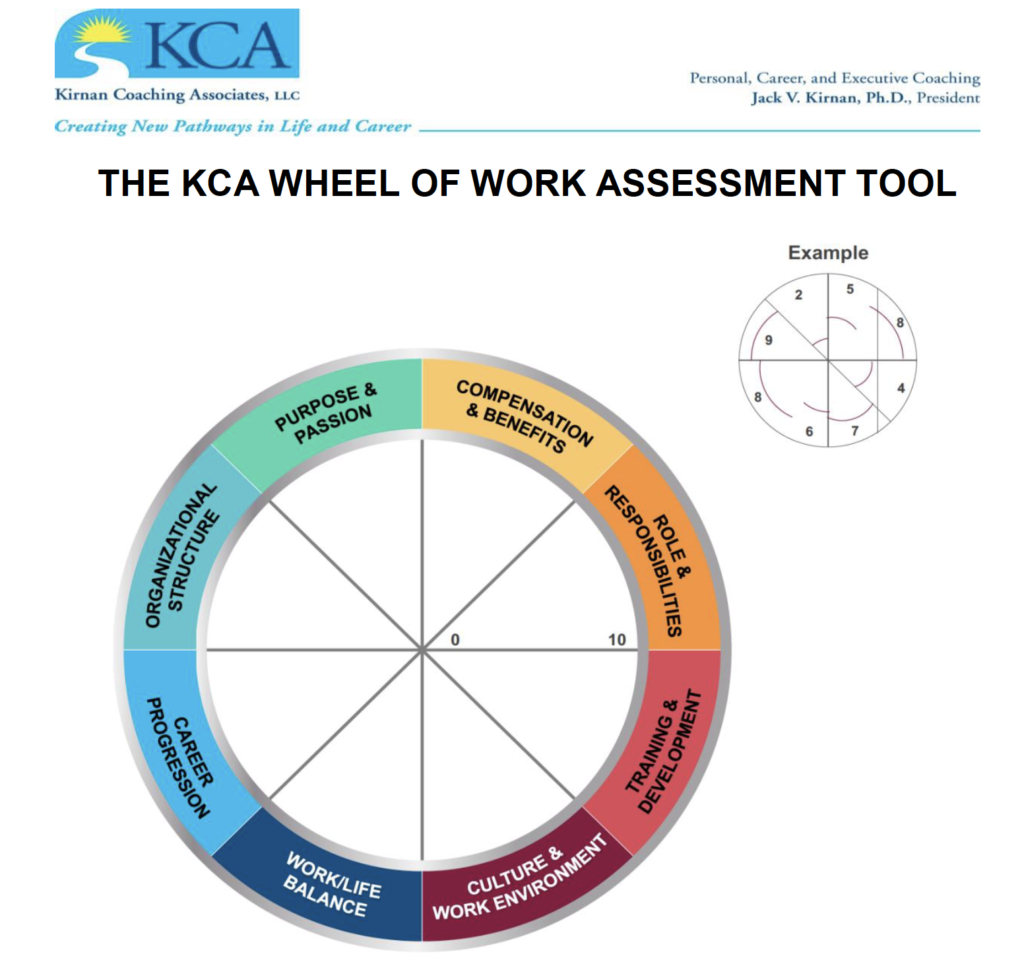
Identifying the Benefits of Remote Work/WFH
To begin, simply journal and write down what have been the major benefits to you in both your home life as well as in performing your job responsibilities in this environment. Employee surveys conducted throughout the pandemic have highlighted a number of popular benefits including:
- Less time, stress, and money spent on commuting to and from work.
- More time spent with family allowing for a more balanced mix between life and work.
- More flexibility to do other things during the day like when to eat, walk the dog, or play music.
- Greater freedom to explore potential lower cost of living options, especially for employees in high cost urban areas like San Francisco, New York City, Chicago, and Boston.
- Potentially greater freedom to explore other job opportunities that include Remote Work/WFH in the job description as companies look to expand their talent pool beyond their historic geographical boundaries.
The Distractions and Shortcomings of Remote Work/WFH
In a similar vein, what distractions have you experienced that get in the way of your optimal performance in a Remote Work/WFH context? Additionally, journal what you believe are the major shortcomings relative to your pre-pandemic experience. Once again, numerous surveys have pointed to a number of common themes:
- The challenge of developing a new routine in a WFH environment and setting clear boundary lines between home life and work. In her research, Wharton Management Professor Nancy Rothbard describes an “Integrator” as someone who doesn’t mind blending work with life and life with work while a “Segmenter” is the opposite of an “Integrator” or people who have a strong desire to separate work from their personal life.
- The difficulty of working effectively while also handling the responsibility for the care of young children at home due to schools having been closed. This juggling of roles is made even more difficult when a partner and/or other family members are also WFH.
- The distractions that can come from having your notifications turned on while WFH such as personal and work email, Slack and other messaging systems, and popular social media platforms like Facebook, Twitter, Instagram, and Snap.
- The fatigue that often sets in from conducting multiple virtual meetings throughout the day giving rise to the term “Zoom Fatigue”.
- Feelings of social isolation and loneliness in the WFH environment and the lack of serendipitous interactions and the impromptu conversations that often occur in person where collaboration, creativity, and innovation often thrive.
- The challenge of maintaining company culture in a virtual setting.
Can Best Practices Improve Your Remote Work/WFH Experience?
Once you have journaled your own experiences with Remote Work/WFH, compare your experience with what are widely considered to be the Best Practices. Carefully evaluate whether any specific items on the Best Practices List could improve your own WFH experience.
- THE DAILY SCHEDULE — Take time to build a daily schedule that works best for unique home environment. What specific times in your day can you be most productive – is it the morning, after lunch, late afternoon, or when your children are engaged in an activity or have retired for the evening?
- THE PHYSICAL SPACE AND EQUIPMENT — Find the best place within your living space that you know can be the most productive. If you have lots of Zoom calls during the day, make sure you build in enough time between your meetings so you can recharge. Take frequent breaks and walk around as much as you can.
- ACTIVE COMMUNICATION AND EMPLOYEE ENGAGEMENT — If you are managing Teams, actively engage with each member of the Team building trust with frequent check-ins to help them problem solve. Offer your Team a virtual Open-Door policy and determine how best to employ using both synchronous as well as asynchronous modes of communication.
- PERFORMANCE METRICS AND EVALUATIONS – Make sure you have clarity with your Manager on how your performance will be evaluated in this Remote Work/WFH environment. Have you taken the time to reflect on what success really looks like for you during this Remote Work/WFH experience? Keep a daily journal to track your activities and accomplishments and make sure you communicate that with your superiors. If you are managing Teams, make sure each member understands the OKR’s, the KPI’s, and any other deliverables and timelines that they are being measured on.
- PROMOTE ACTIVE EMPLOYEE SHARING – During virtual one-on-ones as well as for your Team meetings, encourage employees to share their experiences with one another to help them feel more connected and as an opportunity to build trust and a stronger culture in this environment.
- EMBRACE EMPLOYEE WELLNESS AND SELF-CARE – Use whatever flexibility you have in your day to maintain a positive mindset and engage in various activities that promote wellness like healthy eating, exercise, meditation, yoga, taking frequent walks, listening to music, and spending time on your favorite hobbies.
Getting Prepared for the Coming Pivot to Remote Work and the Virtual Workplace
The John Wooden quote above is a timely reminder to stay focused on those things that we can control in preparing for a Future of Work environment where remote work, WFH, and the concept of a virtual workplace become critical features of the “new normal”. If anything, the COVID-19 pandemic has served to accelerate this coming transformation in the workplace. Major investments will be needed in public transportation systems to address the signifant challenges of commuting to and from major urban centers in an environment that is aligned with social distancing protocols. Companies will also need to significantly revamp their real estate footprint which will likely lead to a more distributed workplace structure than the pre-pandemic experience, one where the company office becomes a place for more collaborative work while the home office (WFH) is where more thinking and execution type tasks are performed.
Whether you are currently working or in transition mode, it is clear that employers will increasingly be looking for candidates who have Remote Work/WFH experience. LinkedIn witnessed a 28% increase in May for job listings that include “remote work” or “work from home”. As a result, it will become increasingly important to incorporate your experiences with Remote Work/WFH in your resume, LinkedIn profile, and on how you present your Remote Work/WFH skill set in your elevator speech and everyday interactions. With that in mind, here are several constructive strategies that can help you prepare for the Future of Work and this “new normal” of Remote Work (WFH) and the Virtual Workplace:
- Clarify Remote Work/WFH Applications and Document Sharing Software – What technical applications and enterprise software systems have you used in your Remote Work/WFH experience to date? Zoom, GoToWebinar, Slack, Microsoft Teams, Google Meet, WebEx, Skype, etc? What other document sharing applications have you used to date, including Google Docs, Evernote, Dropbox, Box,etc.? Make sure you list all of your technical applications and proficiency in using enterprise software programs on your resume and LinkedIn profile.
- Address Remote Work/WFH Skills Gaps Through Online Reskilling and Upskilling Programs — As you review your Remote Work/WFH experiences to date and any updates you may have made to your KCA Wheel of Life and KCA Wheel of Work Assessments, consider enrolling in Reskilling/Upskilling courses that can address any key Skills Gaps. There are numerous E-learning platforms that address a broad range of Remote Work/WFH capabilities including LinkedIn Learning, Coursera, EdX, Udacity, General Assembly, etc.
- Identify Key Responsibilities and Accomplishments During Remote Work/WFH Experience — Journal the key responsibilities of your current position, document any specific accomplishments, and update your resume and LinkedIn profile accordingly.
- Actively Engage with Your Professional Network — Continue to network and build your strategic connections on LinkedIn using any synchronous or asynchronous communications to highlight your Remote Work/WFH capabilities and accomplishments.
Stay safe folks and let me know how you are doing and what your own experiences have been like with Remote Work/WFH. As always, don’t hesitate to call or email me if I can ever be of help to you and remember to keep your oars in the water and row the boat.
Wishing my clients, fellow coaches, and friends the gift of God’s many blessings,
